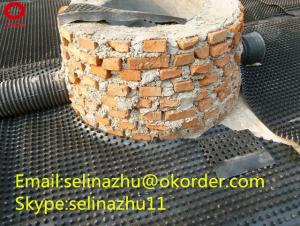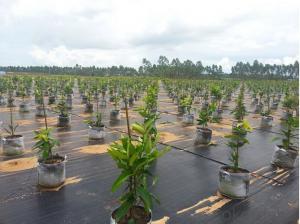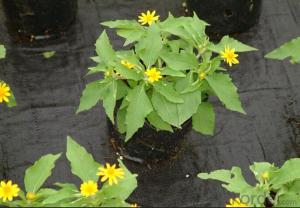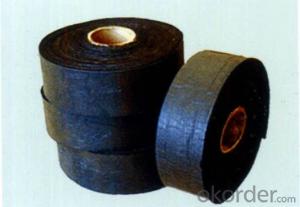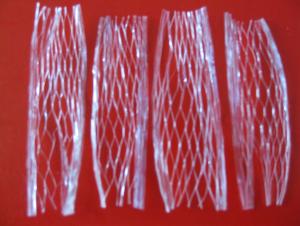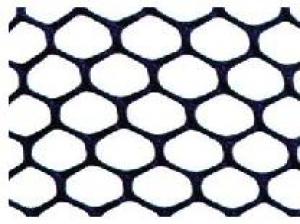Plastic Dimple Drainage Sheet Drainage Board
- Loading Port:
- Qingdao
- Payment Terms:
- TT OR LC
- Min Order Qty:
- 3000 m²
- Supply Capability:
- 500000 m²/month
OKorder Service Pledge
OKorder Financial Service
You Might Also Like
Item specifice
Plastic Dimple Drainage Sheet Introduction
Plastic dimple drainage sheet is made of high molecular, produced by extrusion and adsorption. The tri-diamensional space can drain gas and fluid. It is multi-functional material, can form channels for water and gas easily, which is sound insulation and vibration isolation. In the field of civil construction can be widely used in building roof system layer overhead, planted roof drainage ventilation, basement waterproof system protection, thermal and moisture isolation of the interior surface, road and rail tunnel drainage protection. In the urban land, space, material resources are becoming scare today, plastic dimple drainage sheet to provide the most valuable option.
Plastic Dimple Drainage Sheet Application
Waterproofing system of road
Railway tunnel and underground
Basement of building
Roof garden
Other waterproofing and drainage construction works
Plastic Dimple Drainage Sheet Advantage
-Low cost, High efficiency
-Durable, anti age
-Chemical resistance
-Resistance to puncture of plant roots
-Diverse application
-Simple installation and quality guaranteed
Plastic Dimple Drainage Sheet Specifications
| No. | Item | Technical Index | |||||
| CMAX-H10-1.0 | CMAX-H20-1.0 | CMAX-H10-1.5 | CMAX-H20-1.5 | CMAX-H10-2.0 | CMAX-H20-2.0 | ||
| 1 | Board Thickness, mm | 1.0 | 1.0 | 1.5 | 1.5 | 2.0 | 2.0 |
| 2 | Depth of Dimple, mm | 10 | 20 | 10 | 20 | 10 | 20 |
| 3 | Tensile Strength, N/125px ≥ | 400 | 400 | 500 | 500 | 700 | 700 |
| 4 | Elongation at Break, % | 200 | 200 | 300 | 300 | 400 | 400 |
| 5 | Tensile Strength of Three-dimensional, Kpa | 400 | 320 | 450 | 370 | 500 | 420 |
| 6 | Dimension Stability, % | ±2 | |||||
| 7 | Low Temperature Bending | no creases in low temperature -35℃ | |||||
| 8 | Longitudinal Flow Capacity, cm3/s (water pressure 5KPa) | 5.6 | 8.6 | 5.6 | 8.6 | 5.6 | 8.6 |
| 9 | Longitudinal Flow Capacity, cm3/s (water pressure 350KPa) | 15.2 | 18.2 | 15.2 | 18.2 | 15.2 | 18.2 |
Plastic Dimple Drainage Sheet photos
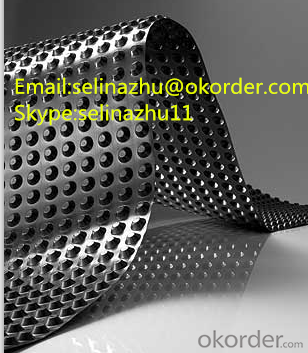
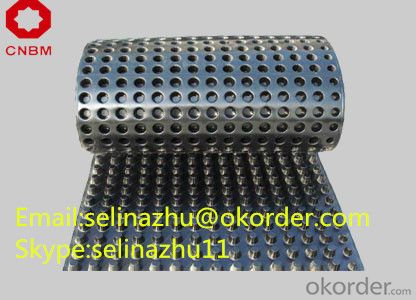
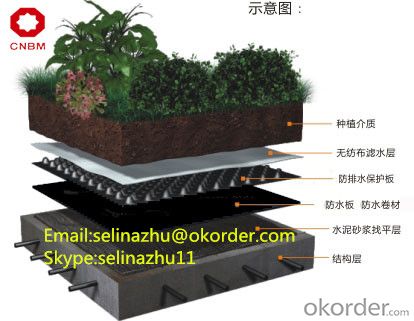
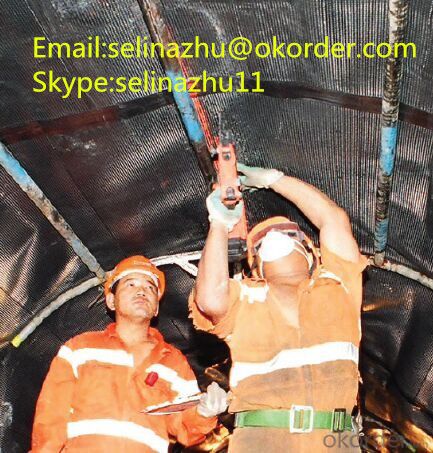
FAQ
1. Which payment do you accept?
For you convenience, our payment can be L/C, TT
2. Is free sample available?
We can supply free samples. You'll just need to pay for express cost.
3. Why choose CNBM?
CNBM is short for China National Building Material Corporation, is a China state owned huge corporation, exported from 1984. CNBM own the largest geosynthetics production base about 667000m2 in China and have about 120production line for all geo materials. For geotextile, we have 38 production lines, our production capacity each day can be 300,000m2.
We passed CE certificate and reaches ASTM standard, have more than 120 customers in EU, USA, Ocean, Africa and all markets. We’ll be your reliable partner in quality and after sales service.
3. How about your quality?
We have strict quality control system, we make testing on incoming raw material and finished products. Your third party testing is also welcomed. With high quality, our products are used on government projects at home and abroad. Our product quality is accepted by clients from all over the world. Warmly welcome your samples requirement or trail order.
- Q:What are the different surface textures available for earthwork products?
- Some of the different surface textures available for earthwork products include smooth, rough, textured, stamped, and patterned surfaces.
- Q:What are the benefits of using geotextiles in green roof applications?
- There are several benefits of using geotextiles in green roof applications. Firstly, geotextiles act as a protective layer, preventing roots from penetrating the waterproofing membrane and causing damage. Secondly, they provide drainage, allowing excess water to flow out of the green roof system and preventing waterlogging. This helps in maintaining the health of plants and prevents the roof from becoming too heavy. Additionally, geotextiles help in retaining moisture and nutrients, reducing the need for frequent irrigation and fertilization. Lastly, they enhance the overall stability and longevity of the green roof system by preventing soil erosion and promoting proper root growth.
- Q:How do earthwork products affect the overall aesthetics of a project?
- Earthwork products can significantly impact the overall aesthetics of a project by shaping and molding the natural landscape. These products, such as landscaping features, retaining walls, and terraced slopes, can enhance the visual appeal of the surroundings, creating a harmonious and visually pleasing environment. Additionally, earthwork products can help to blend the project seamlessly into its natural surroundings, ensuring a cohesive and attractive design.
- Q:Can earthwork products be used in water features and ponds?
- Yes, earthwork products can be used in water features and ponds. These products, such as clay, soil, gravel, and rocks, can be utilized for constructing the base, lining, and landscaping of water features and ponds. They provide stability, support, and aesthetic appeal to these aquatic environments.
- Q:Are earthwork products customizable to suit specific project requirements?
- Yes, earthwork products can be customized to suit specific project requirements. Different types of earthwork products, such as soil, sand, gravel, and rocks, can be tailored in terms of quality, size, texture, and composition to meet the specific needs of a project. Customization can ensure that the earthwork products used are suitable for the intended purpose, such as providing stable foundations, improving drainage, or enhancing landscape design.
- Q:Can earthwork products be used in underground construction projects?
- Yes, earthwork products can be used in underground construction projects. These products, such as excavated soil, gravel, or crushed rocks, can be utilized for various purposes in underground construction, including backfilling, stabilizing tunnels, constructing retaining walls, or creating underground foundations. These materials offer cost-effective and sustainable solutions for underground projects by utilizing the excavated resources on-site, reducing the need for external materials, and ensuring efficient construction processes.
- Q:In addition to cement, but also add gelling agent
- The development of cementitious materials has a long history, people use the earliest cementitious material - clay to wipe the simple building. Then there are cement and other building materials and cementitious materials have a great relationship.
- Q:Are there any earthwork products specifically designed for parking lot construction?
- Yes, there are several earthwork products specifically designed for parking lot construction. These include materials such as aggregate base course, asphalt, concrete, and geosynthetic products like geotextiles and geogrids. These products are used for various purposes such as providing a stable base, improving drainage, and enhancing the overall durability and longevity of the parking lot.
- Q:How do earthwork products affect the drainage system of a construction project?
- Earthwork products, such as soil, gravel, and fill material, play a crucial role in shaping the drainage system of a construction project. These materials determine the slope, elevation, and composition of the ground, which directly impacts the flow of water and the effectiveness of the drainage system. Properly selected and placed earthwork products can ensure that water is directed away from structures, preventing water damage, erosion, and potential flooding issues.
- Q:Can earthwork products be used as decorative elements in construction projects?
- Yes, earthwork products can be used as decorative elements in construction projects. Earthwork products such as natural stone, gravel, or reclaimed materials can be incorporated into various design elements such as pathways, driveways, retaining walls, garden features, or decorative accents. These materials can add a unique and natural aesthetic to construction projects while also offering durability and sustainability.
1. Manufacturer Overview |
|
|---|---|
| Location | |
| Year Established | |
| Annual Output Value | |
| Main Markets | |
| Company Certifications | |
2. Manufacturer Certificates |
|
|---|---|
| a) Certification Name | |
| Range | |
| Reference | |
| Validity Period | |
3. Manufacturer Capability |
|
|---|---|
| a)Trade Capacity | |
| Nearest Port | |
| Export Percentage | |
| No.of Employees in Trade Department | |
| Language Spoken: | |
| b)Factory Information | |
| Factory Size: | |
| No. of Production Lines | |
| Contract Manufacturing | |
| Product Price Range | |
Send your message to us
Plastic Dimple Drainage Sheet Drainage Board
- Loading Port:
- Qingdao
- Payment Terms:
- TT OR LC
- Min Order Qty:
- 3000 m²
- Supply Capability:
- 500000 m²/month
OKorder Service Pledge
OKorder Financial Service
Similar products
New products
Hot products
Hot Searches
Related keywords
